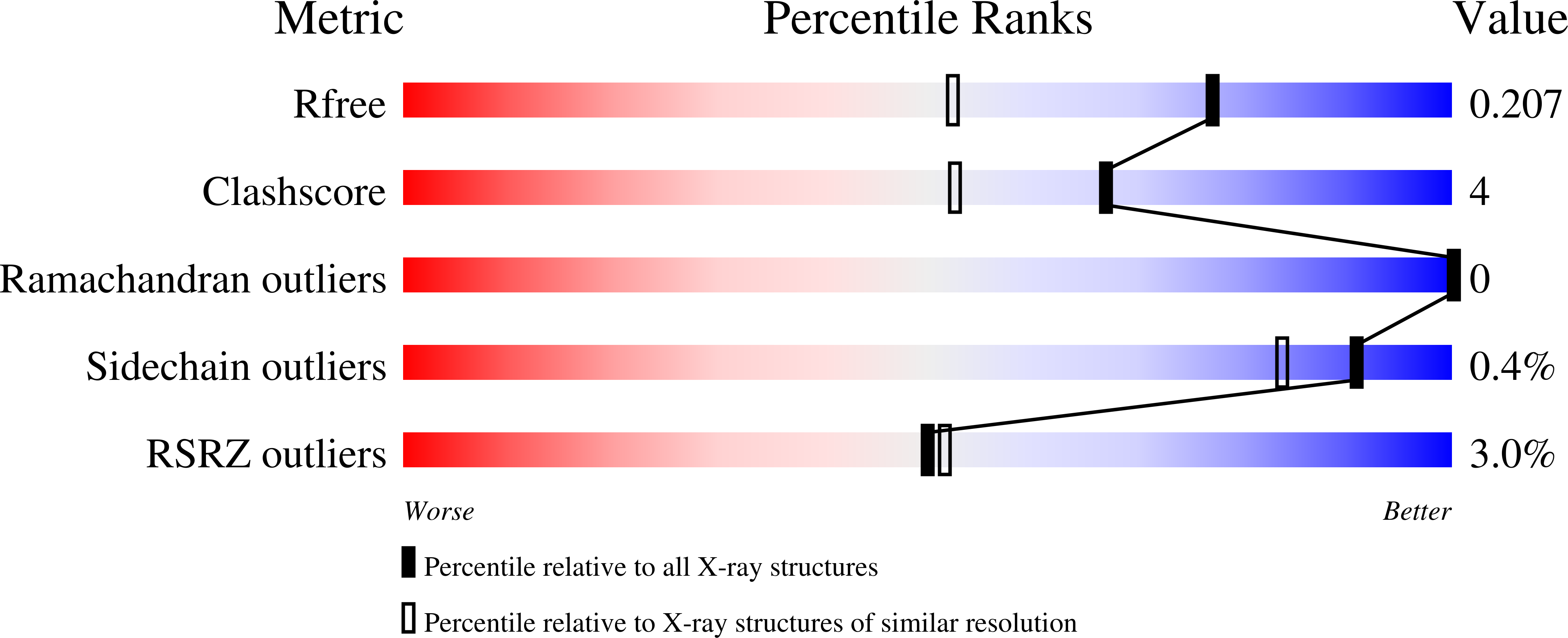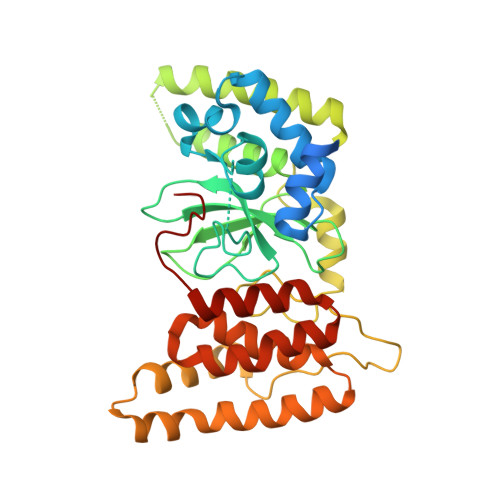HPF1 remodels the active site of PARP1 to enable the serine ADP-ribosylation of histones.
Sun, F.H., Zhao, P., Zhang, N., Kong, L.L., Wong, C.C.L., Yun, C.H.(2021) Nat Commun 12: 1028-1028
- PubMed: 33589610
- DOI: https://doi.org/10.1038/s41467-021-21302-4
- Primary Citation of Related Structures:
6M3G, 6M3H, 6M3I - PubMed Abstract:
Upon binding to DNA breaks, poly(ADP-ribose) polymerase 1 (PARP1) ADP-ribosylates itself and other factors to initiate DNA repair. Serine is the major residue for ADP-ribosylation upon DNA damage, which strictly depends on HPF1. Here, we report the crystal structures of human HPF1/PARP1-CAT ¦¤HD complex at 1.98?? resolution, and mouse and human HPF1 at 1.71?? and 1.57?? resolution, respectively. Our structures and mutagenesis data confirm that the structural insights obtained in a recent HPF1/PARP2 study by Suskiewicz et al. apply to PARP1. Moreover, we quantitatively characterize the key residues necessary for HPF1/PARP1 binding. Our data show that through salt-bridging to Glu284/Asp286, Arg239 positions Glu284 to catalyze serine ADP-ribosylation, maintains the local conformation of HPF1 to limit PARP1 automodification, and facilitates HPF1/PARP1 binding by neutralizing the negative charge of Glu284. These findings, along with the high-resolution structural data, may facilitate drug discovery targeting PARP1.
Organizational Affiliation:
Department of Biochemistry and Biophysics, Peking University Health Science Center, Beijing, China.














